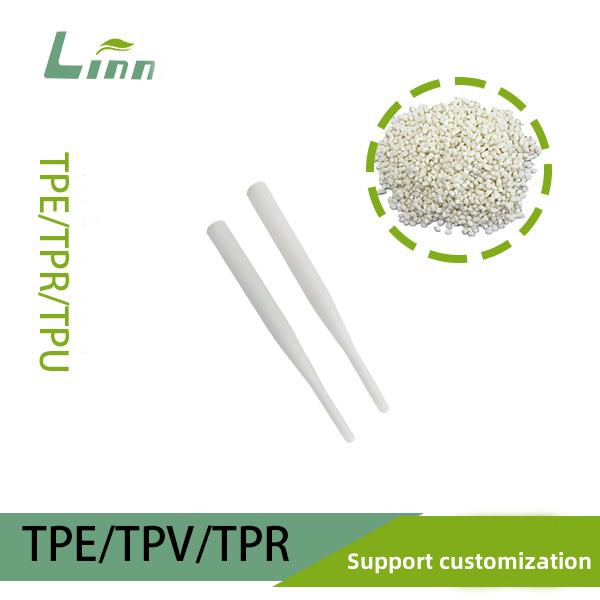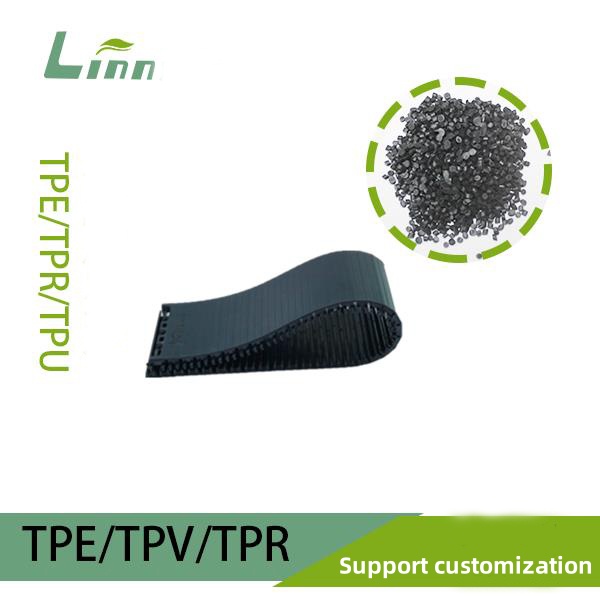Hey everyone, I’m someone who’s been in the materials industry for years, and today I want to dive into a topic that pops up a lot but can get confusing: What’s the difference between TPE and TPR? These two materials are all around us—think phone cases, yoga mats, kids’ toys, even car parts. As a bit of a “materials nerd,” I often get asked by friends, “Are these basically the same thing?” So, drawing from my experience, I’m here to break it all down for you in a way that’s easy to grasp and actually useful.
Let’s Start with the Names: What Are TPE and TPR?
When I first got into this field, all these technical terms made my head spin. To keep it simple: TPE (Thermoplastic Elastomer) is short for a group of materials that act like rubber but can be molded with heat like plastic. TPR (Thermoplastic Rubber), on the other hand, is called thermoplastic rubber. Sound like they’re related? They kind of are—but they’ve got their own personalities and uses.

TPE is a broad category, covering materials that are stretchy yet moldable. TPR, though, is usually seen as a specific type of TPE, often made from SBS (styrene-butadiene-styrene block copolymer) with some tweaks. In real life, though, people—including some sellers—use “TPR” and “TPE” interchangeably, which just adds to the confusion.
So, What’s the Real Difference?
Honestly, when I first encountered TPE and TPR, I thought they were pretty similar too. But after digging deeper, the differences started to stand out. Here’s what I’ve learned:
Base Material
TPE can be made from a bunch of stuff, like SEBS (a hydrogenated version of SBS), TPU (thermoplastic polyurethane), or other polymers. TPR? It’s usually SBS-based. The big deal here is that SEBS is tougher and holds up better over time compared to SBS.

Feel and Performance
I once did a little test—grabbed samples of TPE and TPR and gave them a squeeze. TPE (especially SEBS-based) feels softer, more durable, and doesn’t wear out as fast. TPR feels a bit stiffer and can get sticky or brittle after a while, especially if it’s left in the sun.
How They’re Processed
Both are thermoplastic, meaning you can shape them with heat through methods like injection molding. But I’ve noticed TPE works in a wider temperature range and is easier to handle, while TPR is pickier—mess up the heat, and it might scorch.
Cost and Uses
TPR tends to be cheaper, which is why you see it in budget-friendly products. TPE, with its better performance, shows up more in high-end stuff like medical gear.
A Quick Comparison Table
To make this crystal clear, I put together a table:
| Feature | TPE | TPR |
|---|---|---|
| Base Material | SEBS, TPU, and more | Mostly SBS |
| Softness | Softer, great elasticity | Slightly harder, less stretch |
| Weather Resistance | Awesome, ages well | Okay, can get sticky or crack |
| Processing Temp | Wide range, easy to work with | Narrower, needs careful control |
| Price | A bit higher | Lower |
| Typical Uses | Medical devices, premium toys | Shoe soles, cheap products |
A Real-Life Story: My Material Pick
A while back, a buddy asked me, “TPE or TPR yoga mat—which one should I get?” I told him about a time I’d bought a cheap TPR yoga mat. It was fine for six months, then it started feeling tacky and smelled weird. Switched to a TPE one, and two years later, it’s still soft and odor-free. So I told him, “If you’ve got the cash, go TPE—it lasts and feels better. Tight budget? TPR’s okay, but don’t expect miracles.”
That experience taught me you can’t just look at price—where and how you’ll use it matters most.

Where They Shine: Which One Fits Your Needs?
Picking between TPE and TPR depends on what you’re doing with it. Here’s my take on their best uses:
TPE’s Sweet Spots
Medical Gear: Think IV tubes or gloves—needs to be stretchy and safe.
Fancy Toys: Like teething rings for babies—soft and non-toxic, which parents love.
Outdoor Stuff: Waterproof bags that can handle sun and rain without breaking down.
TPR’s Playground
Shoe Soles: Cheap and decently tough—lots of sneakers use it.
Basic Toys: Rubber balls for kids—affordable and easy to make.
Disposable Items: Think packaging you toss after one use—no big loss.
Environmental Impact and Safety: Stuff You Might Miss
I’ve got a habit of checking how eco-friendly materials are whenever I work with something new. TPE and TPR aren’t the same here either. TPE (especially SEBS-based) is halogen-free, burns cleaner, and recycles well—pretty “green” stuff. TPR, because of its SBS makeup, doesn’t hold up as well and might break down into tiny bits that aren’t great for the planet.
On safety, I looked into the EU’s RoHS standards (check it out here). TPE usually meets these rules easily, which is why it’s big in medical stuff. TPR in cheaper products might have plasticizers, so you’ve got to watch out.

My Pro Tip: How to Tell Them Apart
Sometimes sellers label TPR as TPE to bump up the price. Here’s how I spot the difference:
Sniff Test: TPE’s nearly odorless; TPR might have a faint rubbery smell.
Stretch It: TPE bounces back fast; TPR’s a bit sluggish.
Burn Test (be careful): TPE gives off less smoke; TPR’s smokier and harsher.
These are my “DIY hacks,” but the best way is to ask for a lab report, like an SGS certification (more info here).
Industry Buzz: TPE’s Taking Over
I went to a materials expo recently and noticed TPE’s stealing the spotlight from TPR. Why? People care more about eco-friendliness and performance now. Stats say the global TPE market could hit $26 billion by 2027, growing about 5% a year (source: MarketsandMarkets). TPR’s still around, but it’s mostly hanging out in the low-cost zone and losing ground.
Final Thoughts: Pick What Works for You
After all this, I’d say there’s no “better” or “worse” between TPE and TPR—it’s about what fits your life. If you’re all about value and don’t mind replacing stuff, TPR’s solid. If you want something that lasts and feels premium, TPE’s worth the splurge. Materials are like picking out a jacket—you’ve got to try it on to know if it’s right.
Hope this clears things up for you! Next time you’re shopping, you won’t be scratching your head over TPE vs. TPR. Got questions? Hit me up—I’m happy to chat more.

FAQs
Q1: Which is greener, TPE or TPR?
A: From what I’ve seen, TPE (especially SEBS-based) wins—recycles better and has lower toxicity. TPR doesn’t age as gracefully and might leave more of a mark on the environment.
Q2: Is TPE way more expensive?
A: Not always. I’ve checked prices, and TPE’s maybe 20-30% pricier per ton, but it lasts longer, so it might even out.
Q3: How do I know if something’s TPE or TPR?
A: I usually smell it, stretch it, or read the label. For peace of mind, ask for a material test report.
Q4: Can TPR be used for food-safe stuff?
A: I wouldn’t. TPR might have additives that aren’t ideal—stick to TPE or silicone for food-grade needs.
Q5: Can you mix TPE and TPR?
A: Technically, yeah, but I don’t recommend it. They process differently and might not play nice together—think uneven wear or weak spots.



